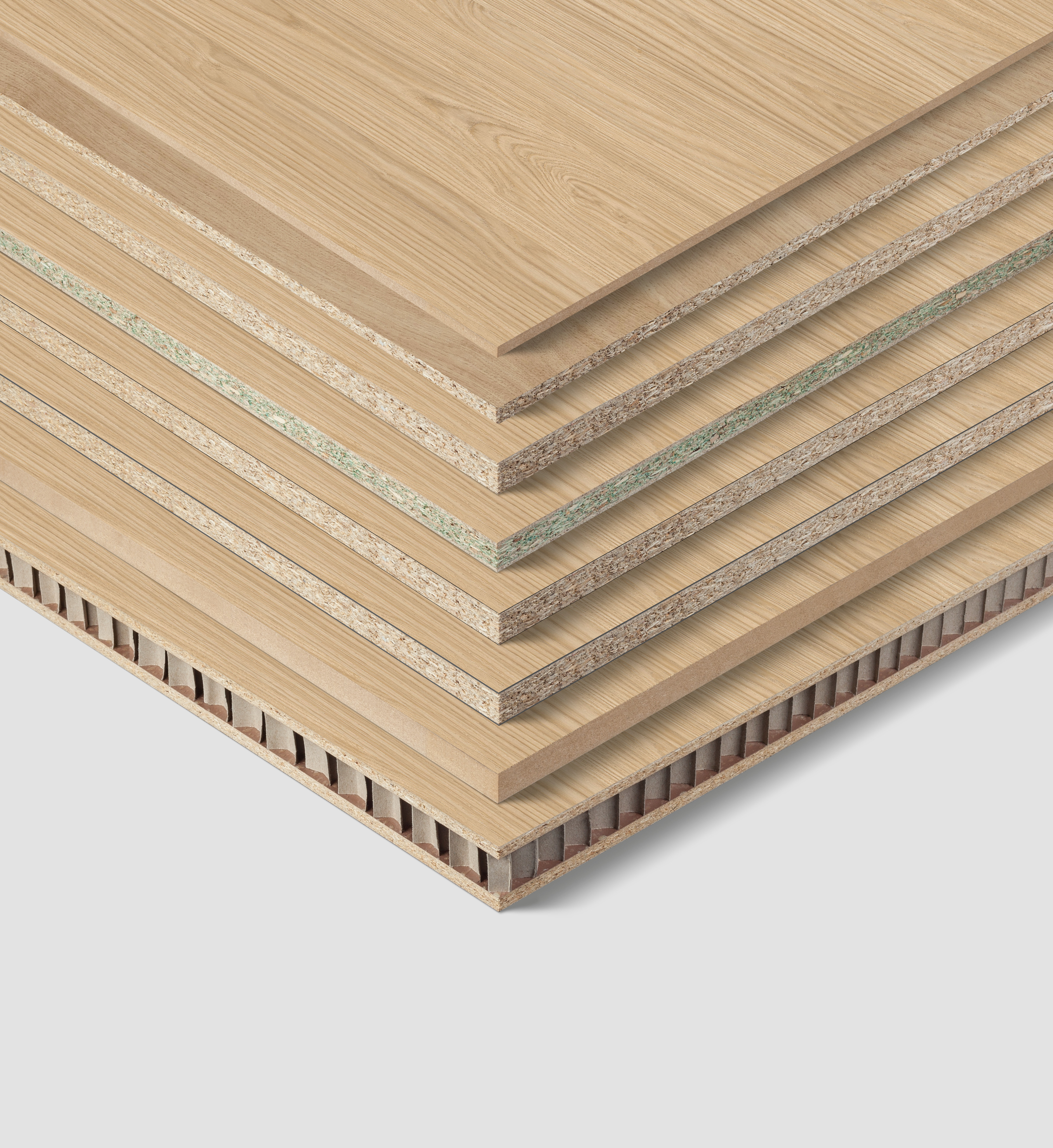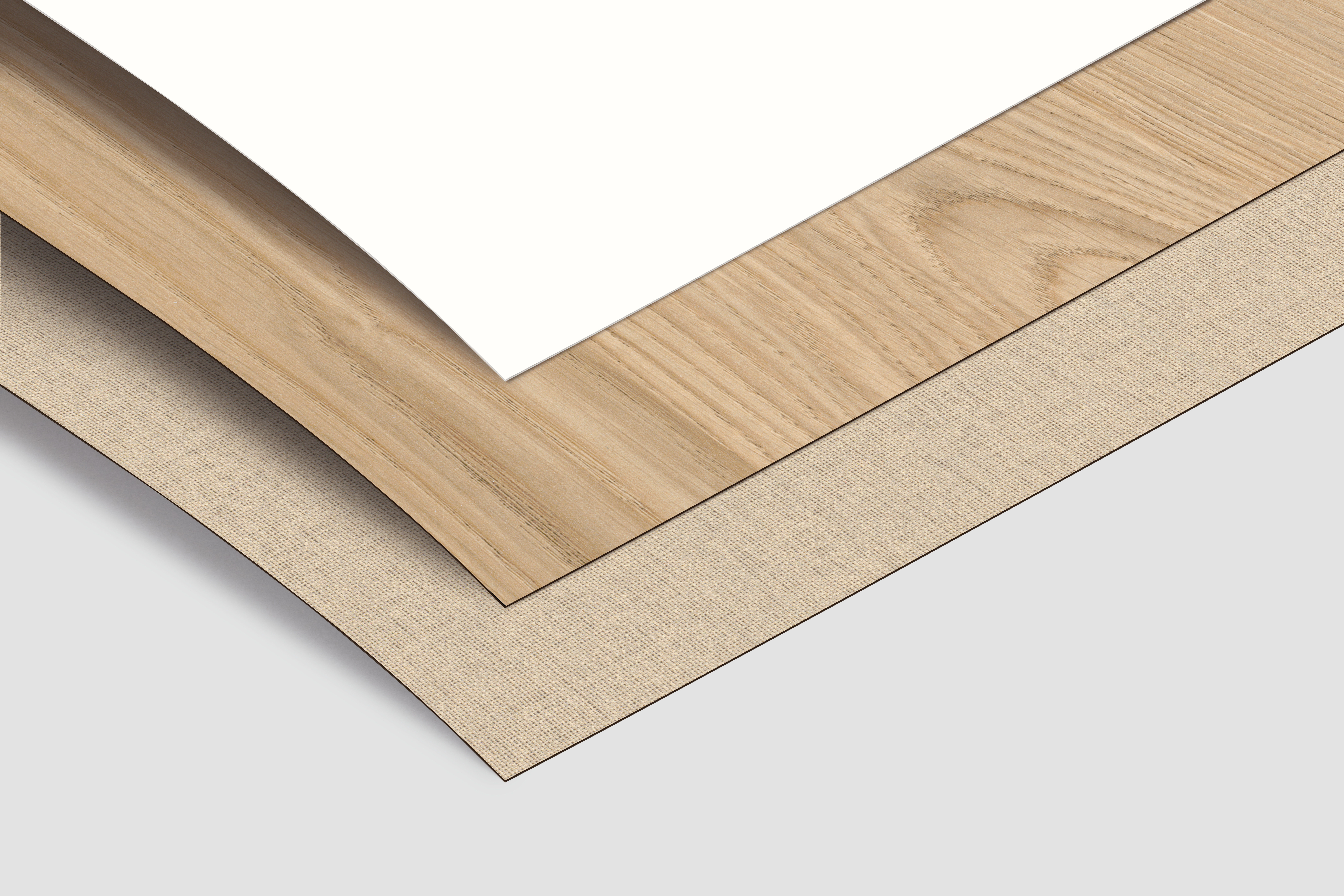
Materials made from the renewable, sustainable and low-emission resource wood
Nobody likes polluted air, especially not indoors. We are aware of the growing importance of indoor air quality. This is why we intensively test the emissions of our products and also have them tested by independent institutes for their suitability for “healthy homes”. Everything you need to know about emissions from wood-based materials can be found in our video .
Healthy homes with our products
The following products for furniture and interior design are certified according to the current award criteria V1.1 of “TÜV PROFiCERT-product interior”. This confirms that you are purchasing safe products that are suitable for “healthy homes”. This certification is monitored by an independent testing institute and the producing plants are regularly audited.
This means you are working with products that are both tested for harmful substances and comply with international emission requirements.
TÜV PROFiCERT-product Interior (Premium) complies with the following international emission limits:
- AgBB 2018
- BREEAM Exemplary Level
- ChemVerbotsV E1 DE 2020
- Èmissions dans l'air intérieur: A
- Finnish M1 classification
- The Austrian Ecolabel, Guideline UZ 07
- Belgian VOC Regulation
- Annex 8 MVV TB (ABG)
- CAM Italy
- LEED v4 (outside North America)
- DE-UZ 76 (Blauer Engel)
Certified products
What do wood-based materials emit?
The most common emissions from wood and wood-based materials are terpenes, aldehydes and organic acids. Depending on the type of wood, these occur in different proportions and concentrations.
Terpenes
Terpenes are natural ingredients that are mainly found in coniferous trees. They are responsible for the distinctive smell of wood – for example the scent of pine or Swiss stone pine.
Aldehyde
Aldehydes are formed during the natural air drying of wood. The drying and hot pressing of our boards intensifies this process. The typical smell after mowing the lawn is an example of natural aldehydes (hexanal).
Organic acids
Acetic acid and hexanoic acid are examples of organic acids. Acetic acid is present in hardwood and softwood used. It is a food preservative that is on the WHO list of essential medicines.
The health impact of this mix of substances has been scientifically studied: For example, a study by the Fraunhofer WKI in Braunschweig together with the University of Freiburg found that even a multiple of the VOC concentration measured in homes had no effect on health.*
*Professor Volker Mersch-Sundermann/ Professor Rainer Marutzky (2009): Evaluierung der gesundheitlichen Wirkung holz- bzw. holzwerkstoffspezifischer Emissionen. (Evaluation of the health effects of wood or wood-based material emissions.)
Indoor air quality

Airtight construction methods are important measures for saving energy. However, the airtightness of the building shell ensures that heat, but also emissions, remain in rooms for a longer period of time. Regardless of the construction method, a wide variety of factors influence the indoor air quality. Wood and wood-based materials are among the influencing factors perceived as positive*2. Ventilation conditions and user behaviour subsequently determine the indoor air quality. In all common rooms, other artificial emission sources also contribute to the indoor air quality in addition to natural ones. Therefore, the impact of interior fittings and related equipment should not be ignored.
* 2 DBU HOMERA study by the Munich Technical University, documented online: www.informationsdienst-holz.de/publikationen
Everything you need to know about VOC
VOC is the abbreviation for volatile organic compounds. Under normal conditions, these are gaseous and contribute to indoor air quality. When it comes to a healthy home, VOCs are a major focus of attention since they enter the body through respiration.
Furniture emits volatile organic compounds. These could be natural VOCs from the woods or wood-based materials used, but also residues of solvents from paints, glues or sealants. These substances are responsible for furniture odours. The emission of volatile organic compounds is subject to a decay curve: The emissions are relatively high at the beginning of the product life cycle, but they quickly flatten out. The beginning of the decay curve is often also perceived very positively, such as a typical new car smell or when peeling an orange.
VOCs from wood-based materials often have a bad reputation. In reality, emissions from wood-based materials are natural substances such as terpenes or aldehydes. Compared to natural wood, only the composition is changed by the drying process during production. The health impact has been scientifically studied: For example, a study by the Wilhelm-Klauditz-Institut (WKI) together with the University Clinic of Freiburg found that even a multiple of the VOC concentration measured in homes has no effect on health.
Yes. It is the only substance in wood-based materials that emits not only from the wood but also from the glue used. Formaldehyde is a natural substance emitted from wood or fruit. Even humans breathe out formaldehyde. The formaldehyde emissions of our laminated Eurodekor boards are already approaching those of natural wood.




